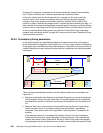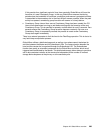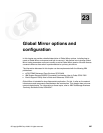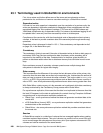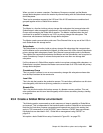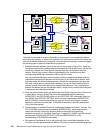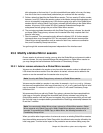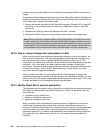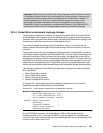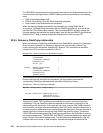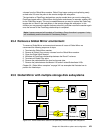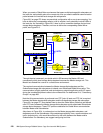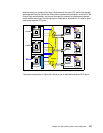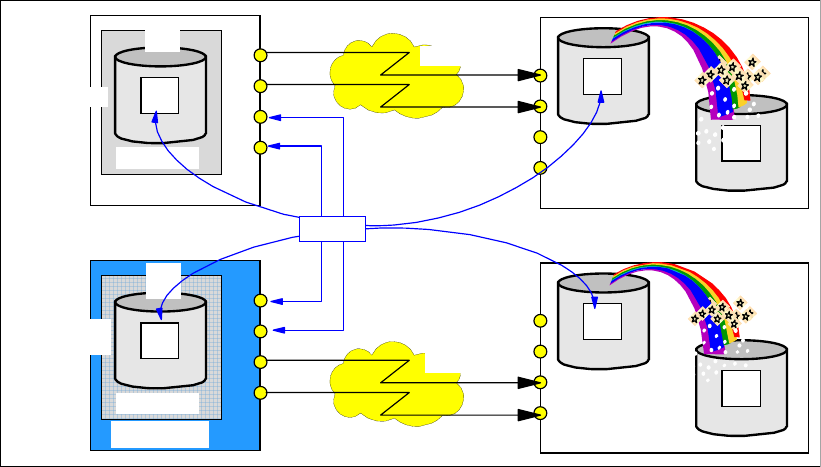
270 IBM System Storage DS6000 Series: Copy Services with IBM System z
Figure 23-1 Global Mirror basic configuration with Master and Subordinate disk subsystems
The order of commands to create a Global Mirror environment is not completely fixed and
allows for some variation. In order to be consistent with other sources and to not confuse the
user with a different sequence of commands, we recommend a meaningful order and suggest
the following steps to create a Global Mirror environment:
1. Establish the paths between the local site and the remote site. In Figure 23-1, these are
the logical communication paths between corresponding LSSs at the primary site and the
remote site, defined over Fibre Channel physical links that are configured over the
network. Global Copy primary LSSs are represented by the A volumes, and their
corresponding Global Copy secondary LSSs by the B volumes.
You may also establish logical communication paths here between the Master and any
Subordinate storage disk subsystem that will be part of the Global Mirror session. Note
that these paths are defined between primary storage disk subsystems at the local site.
With only a single primary storage disk subsystem, you do not need to define paths to
connect internal LSSs within the primary storage disk subsystem. The communication
between the Master and the Subordinates within a single primary storage disk subsystem
is transparent and internally performed.
2. Once the communication paths are defined, start the Global Copy pairs that will be part of
a Global Mirror session. Global Copy has to be established with the parameters
MODE(COPY) and OPTION(XD) when you use CESTPAIR TSO commands. When you
use ICKDSF use PPRCOPY ESTPAIR, which also has the parameters MODE(COPY)
and OPTION(XD). We recommend that you wait until the first initial copy is complete
before you continue to the next step. This avoids unnecessary FlashCopy background
I/Os in the following step.
3. The next step is to establish FlashCopy relationships between the B and C volumes. The
TSO FCESTABL command has a parameter, MODE(ASYNC), which combines and
implies the particular FlashCopy attributes that are required for this FlashCopy
relationship (see 22.3.4, “Introduce FlashCopy” on page 257). ICKDSF explicitly requires
the keywords CHRCD(YES) NOTGTWT(YES) and MODE(NOCOPY) in the
corresponding FC ESTABLISH commands.
4. With external Subordinates, that is, with more than one involved disk subsystem at the
local site, you need paths between the Master LSS and any potential Subordinate storage
Global Co
py
Primary
Primary
A
A
Primary
PENDING
Primary
Primary
A
A
Primary
PENDING
Primary
Primary
Primary
Primary
A
B
Secondary
C
Tertiary
PENDING
Primary
Primary
Primary
Primary
A
B
Secondary
C
Tertiary
PENDING
Network
Network
01
01
Subordinate
Master
Global Copy
paths
Remote site
Local site



